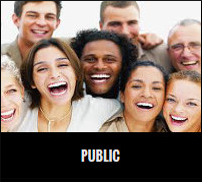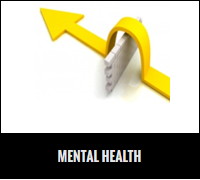The Story of M: Her Father’s Condition
The father of one of my associates (we’ll call her Mary) had a severe spinal injury when she was just a child. The accident not only paralyzed him from the neck down but also forced him to live in an iron lung, in an institution for the rest of his life. His wife, left with two children, asked if it would be all right to divorce him and remarry. He agreed. Then, a choice had to be made by this unfortunate man: to live a life of purpose, or to feel sorry for himself for what turned out to be another forty years. Forty years of life with a well-educated brain and a body that could not be used to take care of himself.
Tragedy strikes many individuals. Some tragedies — like bankruptcies, job loss, divorce, fires that destroy homes, robberies, car accidents, and serious but not deadly illnesses — are not nearly as catastrophic as being stuck in an iron lung because, one may argue, they comparatively allow for greater possibility of reclaiming one’s life.
Many individuals who experience these tragedies are healthy, well-educated people. The rest of their lives is still in front of them and they have a clear possibility of seizing an opportunity to confront their tragedy and overcome it. And yet many of them become depressed, non-functioning, bitter, angry, self-pitying, defeated, unhappy individuals.
What is the difference between those who choose the road to overcoming tragedy and those who feel defeated?
Mary’s father — who had lost his body, who needed help even for the most personal and potentially embarrassing bodily functions, and who was locked into an iron lung in one room — made a choice. He became one of the most prolific lobbyists for all forms of disabilities and inspired legislation and reforms and raised America’s consciousness regarding the needs of the disabled.
The stress, the hopelessness that tragedies and disappointments produce affect individuals who are both physically and mentally well-developed, differently. Why should that be if we are only a body and a brain? If we are only a body and a brain, then all the answers and solutions must lie in those two areas, the only areas open for investigation and research.
Focusing on body and mind has led to medical and psychological communities prescribing drugs that numb feelings or induce a sense of euphoria (well-being). Both affect the body’s and brain’s functioning. While in some cases they may assist the individual to temporarily function better day to day, they in no way assist in dealing with the underlying causes of why the tragedy affected a person in such a debilitating way.
Looking for and trying to deal with underlying causes is the province of some form of psycho-intervention. Psychiatry is depending more and more on drugs. It has no other model for effective intervention. The time taken by psychiatrists for conversation is lessening, according to the New York Times.(5) Even when they understand the background of a client, the client doesn’t necessarily feel better about themselves or the future. The results of talk are meager.
What part of a human being is preventing this healthy, well-developed body and this healthy, well-developed brain from functioning in the same healthy way it used to before the tragedy occurred? After all, it is the same body and same brain! What part is in control of this body and brain?
My belief is that without having something real to work with, something that we know must be at the root of emotional distress, we cannot approach healing effectively. Including in our scientific model the concept of a real self — a real self that has been damaged in childhood or adulthood and now needs rehabilitation and development — would make diagnosis, prognosis, and treatment more likely to succeed.
We know without needing to do tests that the self's four areas of development (which I will discuss later) have been ignored or damaged and need to be the focus of attention. Developing clients’ awareness so they can be aware of their full spectrum of feelings, rather than numbing their awareness of pain with drugs, is the start.
The next step is to teach clients about the need for creating a new vision, a new set of possibilities. Once clients understand that they can affect the future by implementing a new vision, they become more hopeful. Even if they don’t believe in it, their focus of attention becomes the future with positive possibilities. In The Mind and the Brain, Dr. Jeffrey M. Schwartz and Sharon Begley discuss the brain’s plasticity and how vision can require the use one’s brain.(6)
Teaching individuals about effective communication helps their vision begin the manifesting process. Once we communicate to the people in our universe, the universe and people begin to respond to our communications. The communication creates something to talk about, a future with possibilities.
Finally, teaching people to love and ask for love, the necessary nourishment of the self, gives them energy to persist. Instead of drugs, what people need is to learn to love (feed) themselves. Exactly the way they learned how to feed their bodies and brains with airfood-water, they will learn to feed themselves with love.
The most hopeful, energizing thing in life is to have a vision that is fed by love. At the time of conceptualizing the Continuum Theory, I hypothesized that what we call love is a form of nourishment that nourishes the self. Since then, the research of Barbara Fredrickson at the University of North Carolina has made significant strides toward proving my thesis that love is exactly like air, food, and water, nourishment vital to the development and thriving of human beings.
At this time, mainstream therapeutic interventions do not address love as a real, tangible energy. Harville Hendrix has written about getting, keeping, and giving love. His program, Imago Relationship Therapy, has been highly successful, although it lacks the theoretical underpinnings of what love is. Its success can be directly related to an approach that emphasizes what my theory calls loving behavior. Empathy, respect, validation, consideration, patience, and conscious communication are all different forms of love, different ways of transmitting loving energy. They all nourish that part of us that is not the body or brain but the self, which controls both body and brain.
My therapeutic training is in Gestalt therapy, which is highly awareness oriented, and the connection between therapist and client often will include the touching of hands, hugs, cradling as an infant, and many other loving behaviors that are not encouraged in most other therapeutic interventions. Yet, Gestalt theory never mentions love and insists that the self is merely a process of ebb and flow — not very useful for either the therapist or the client.
The issue isn’t or shouldn’t be whether the self is real or not. The issue is or should be what explains human behavior in a way that is consistent with our experience, is more useful in positively altering human behavior and thereby assisting individuals in achieving their life goals and living happy, healthy lives. Ease of access is another issue: which explanation is more easily understood by the layperson and clinician alike, and can more easily be used by all for the betterment of society? Imagine having scientific ideas of human development and the development of the self that inspires laypeople, one they can learn and effectively use themselves, just like they could use the wheel or arithmetic.
My mission was to create a theory of who we are and how we can create better lives, a theory that is easily learned and easily used by everyone. First, I spent over ten years devising a new theory of life span and human development. Then, I spent the next twenty years researching the many applications of the theory, all of which turned out to support its efficacy. So, for me, the debate about whether self is an entity has been over for quite a while.
For you perhaps, the debate is just starting. I am more than happy to take on your skepticism, your questions, and your objections.
Self is an entity, albeit not defined in the way philosophy and psychology often try to define an entity as separate, solid, visible, or taking up space. I believe that the reason we are still embroiled in the debate of whether self is real, besides the fact that I have not yet made my theory or findings fully public, is that we keep starting the debate by going all the way back to the Cartesian theater and before, continually asking the same questions rather than new, practical ones. Actually, the questions and answers haven’t changed much — only the vocabulary for expressing them has, much of it now coming from clinical psychology.








